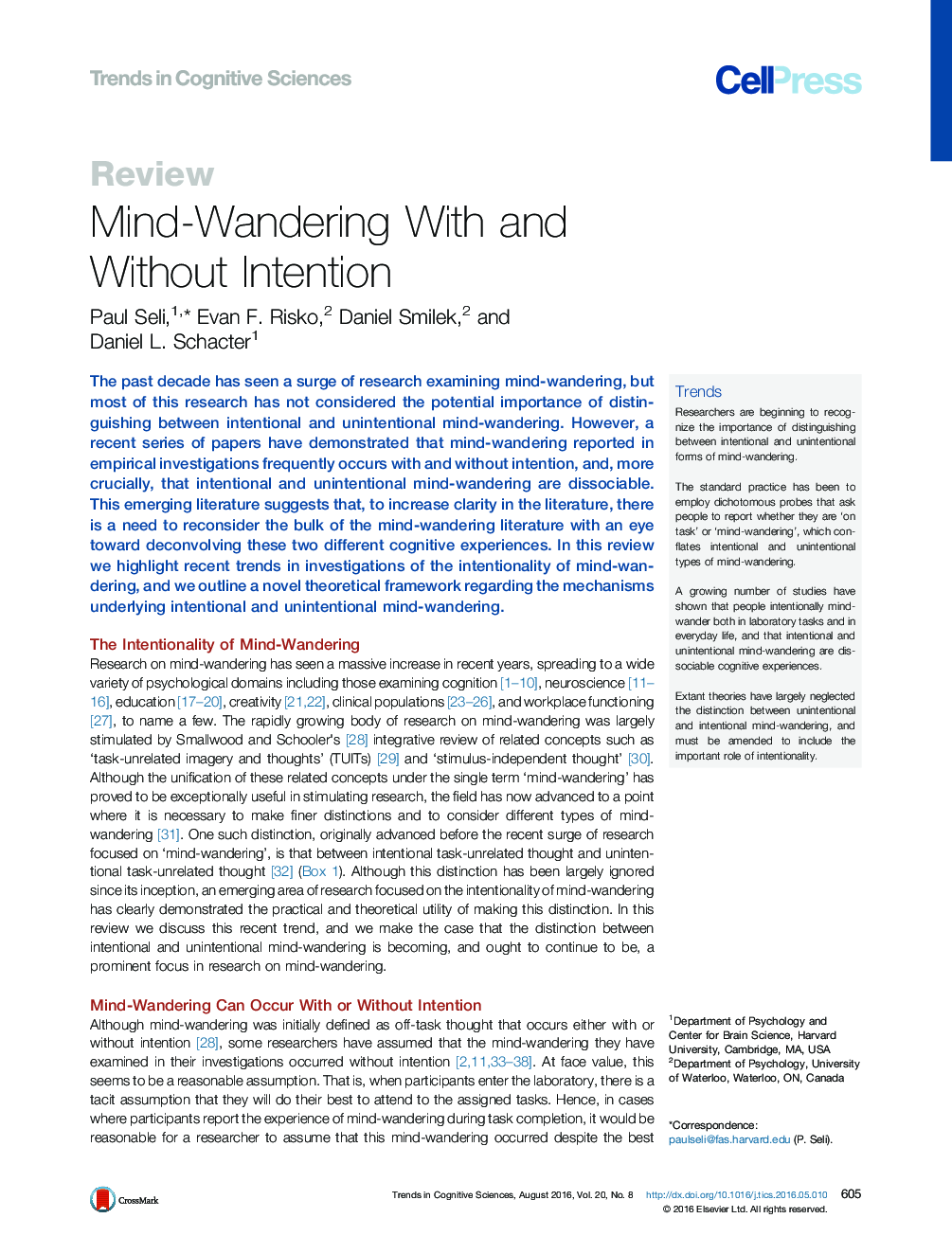| کد مقاله | کد نشریه | سال انتشار | مقاله انگلیسی | نسخه تمام متن |
|---|---|---|---|---|
| 141335 | 162856 | 2016 | 13 صفحه PDF | دانلود رایگان |
The past decade has seen a surge of research examining mind-wandering, but most of this research has not considered the potential importance of distinguishing between intentional and unintentional mind-wandering. However, a recent series of papers have demonstrated that mind-wandering reported in empirical investigations frequently occurs with and without intention, and, more crucially, that intentional and unintentional mind-wandering are dissociable. This emerging literature suggests that, to increase clarity in the literature, there is a need to reconsider the bulk of the mind-wandering literature with an eye toward deconvolving these two different cognitive experiences. In this review we highlight recent trends in investigations of the intentionality of mind-wandering, and we outline a novel theoretical framework regarding the mechanisms underlying intentional and unintentional mind-wandering.
TrendsResearchers are beginning to recognize the importance of distinguishing between intentional and unintentional forms of mind-wandering.The standard practice has been to employ dichotomous probes that ask people to report whether they are ‘on task’ or ‘mind-wandering’, which conflates intentional and unintentional types of mind-wandering.A growing number of studies have shown that people intentionally mind-wander both in laboratory tasks and in everyday life, and that intentional and unintentional mind-wandering are dissociable cognitive experiences.Extant theories have largely neglected the distinction between unintentional and intentional mind-wandering, and must be amended to include the important role of intentionality.
Journal: - Volume 20, Issue 8, August 2016, Pages 605–617
